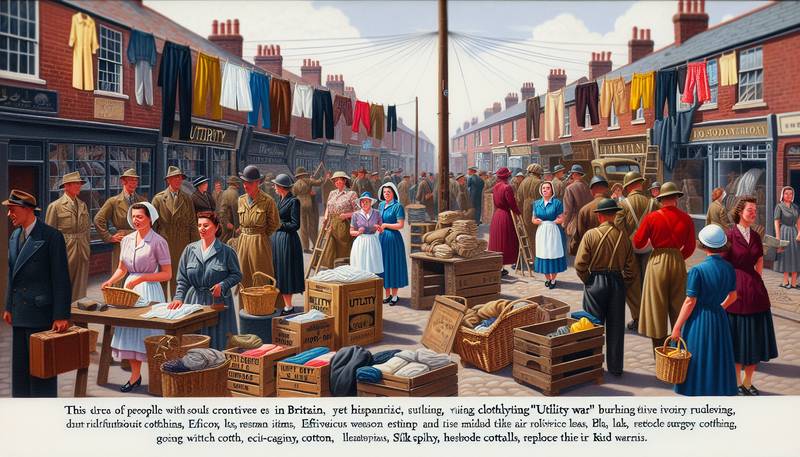Wartime Utility Clothing: Britain's 1940s Make-do and Mend

A Brief History of Fashionable SacrificeAs the dreaded Luftwaffe rained down destruction on the British Isles, the citizens of this beleaguered realm discovered that even their garments were not immune to the scourge of global conflict. With materials like leather and silk being commandeered for the war effort, the British government introduced something called Utility Clothing in 1941. This was a brave, if somewhat dowdy, attempt to ensure that the nation's sartorial needs were met while still contributing to the grand endeavor of defeating the dastardly Nazis.Enter the Utility SchemeUnder the auspices of the Board of Trade, the Utility Scheme mandated that clothing be produced using a minimal amount of fabric, adhering to strict specifications in terms of materials and design. Gone were the days of frivolous lapels and decadent pleats; the age of the boxy silhouette had arrived.But fear not, gentle reader, for this was not simply a matter of bureaucratic navel-gazing. Indeed, the Utility Scheme was an ingenious attempt to ensure that the good people of Britain could still look presentable while conserving vital resources. And in true British fashion, the populace embraced the challenge with ingenuity and creativity, giving rise to the now-famous "Make-do and Mend" philosophy.Make-do and Mend: A Resourceful RevolutionWith new clothing rationed and tightly regulated, the British people were forced to reimagine their approach to fashion. The "Make-do and Mend" movement encouraged people to repair their existing garments, upcycle discarded items, and even create entirely new ensembles out of unusual materials like blackout curtains and parachute silk.But this was not simply a case of necessity breeding invention. No, the "Make-do and Mend" movement was a veritable explosion of creativity, as people found new ways to express their individuality while adhering to the strictures of the Utility Scheme. And in doing so, they inadvertently created a new aesthetic that would come to define the wartime era.- Knitting became a patriotic duty, with everyone from children to the elderly called upon to produce socks and sweaters for the troops. Patterns were distributed by the government, and knitting circles sprung up all over the country, transforming this once quiet pastime into a raucous display of national unity.
- Darning, once the bane of every housewife, became a badge of honor, with well-mended garments a testament to one's resourcefulness and commitment to the war effort. The once humble darning mushroom (used to mend holes in socks) was transformed into a veritable symbol of defiance in the face of adversity.
- And let us not forget the ultimate act of sartorial rebellion: the "unfrocking" of one's husband's old suit to create a stylish new ensemble for oneself. The transformation of these once-masculine garments into something altogether more feminine was not only a display of resourcefulness, but a subversive act of gender-bending defiance.
The Legacy of Utility ClothingWhile the war eventually ended, and the restrictions on clothing eased, the impact of the Utility Scheme and the "Make-do and Mend" movement can still be felt today. The no-nonsense aesthetic of the era laid the groundwork for the minimalist designs of the 1950s, while the resourceful spirit of the movement lives on in the rise of ethical fashion and the new wave of DIY designers who champion recycling and repurposing materials.As we look back on the ingenuity and resourcefulness of our wartime predecessors, we are reminded that fashion, at its best, is not simply a matter of aesthetics, but a powerful form of expression that can inspire creativity, foster unity, and even contribute to the greater good. And as we face our own challenges, be they global conflicts or existential crises, perhaps we too can find solace in the humble act of making do and mending.A Final ThoughtSo, as you don your vintage victory rolls or admire the practical elegance of your wartime-inspired trousers, spare a thought for the brave men and women who took up the needle and thread in defense of their beleaguered nation. For it was in the crucible of conflict that Britain's wartime utility clothing was forged, a testament to the indomitable spirit of a people who refused to let even the darkest days of war dampen their sartorial splendor.
|
|








